I can imagine that many people reading the sub-headline of this article may be wondering, “hasn’t the world suffered from enough Monroe Doctrine and Manifest Destiny over the past two centuries?! Haven’t wars across the middle east, genocide against native Americans and imperial abuses of Latin American nations all occured BECAUSE of the doctrines of Manifest Destiny and the Monroe Doctrine??”
While I understand completely why these thoughts may strike the mind of a reader, and while I don’t deny the vast abuses done to the world under these doctrines, I would like it to be known that the actual origins of both interconnected philosophies should not be thrown into the garbage simply because evil perverts justified evil things using them. For inversely, great good was done by great moral heroes against imperialism and the Anglo-American deep state following these doctrines as well.
So rather than fall into the trap of calling American history all evil (as Wokeist zombies do) or as all good (as too many simple-minded patriots do), I want to revisit these foundational philosophies with the hope that we can gain a measure of nuanced thinking in our appreciation for world history and the dynamics shaping today’s volatile world.
The Republican Origins of Manifest Destiny
The earliest expression of America’s sense of Manifest Destiny can probably be traced to John Winthrop’s famous “City on a Hill” speech of 1630, where he made a point that America’s identity should serve as a beacon and role model of liberty for other nations to be inspired by. It was later amplified by George Washington and Benjamin Franklin, who explicitly wanted America’s first army and congress to be called ‘Continental’ instead of the ‘congress of the 13 colonies’ or ‘army of the 13 colonies’.
When Washington led the Continental Congress, the Americas were dominated by hereditary systems of empire led by the French, English, Russian and Spanish oligarchist systems that dominated everything but the 13 colonies.
YET President Washington also understood that just because America’s founding principles were in harmony with Natural Law, it didn’t mean that the young republic was immune from falling into the trap of becoming another evil empire, which is why he warned the young nation of avoiding the dual evils of foreign entanglements externally and party politics domestically.
President John Quincy Adams extended these ideas further still by drafting the Monroe Doctrine, which he knew could work only if America ventured “not abroad, in search of monsters to destroy.”
How NOT to do Manifest Destiny
The irony is that up until recently, the concept of Manifest Destiny has been traditionally associated with the United States, which shares many demographic characteristics with both China and Russia, with the vast majority of the population concentrated in the eastern half of the continent.
Sadly, the forces who shaped American expansion- especially during those first 125 years when Manifest Destiny had its greatest influence, have too often failed this test miserably. In its first 12 decades of life, the USA grew from 13 backward colonies in 1776 to 45 industrially-advanced states in 1900. Throughout those years, the wiser anti-slavery voices of Benjamin Franklin, John Jay, John Quincy Adams, Abraham Lincoln, Charles Sumner, William Seward, and William Gilpin were too often subverted by an anglophile Deep State parasite class that ran both Wall Street in the north and the southern slave power.
This multiheaded hydra lurking within the heart of the USA had its own perverse ideas of “Manifest Destiny,” which stood in diametric opposition to the ambitions of the great statesmen listed above.
Where abolitionist-leading figures like Benjamin Franklin and Alexander Hamilton encouraged the sharing of knowledge, technical skills, science and the fruits of technological progress to both blacks and natives without forcing religious conversions or crushing their local traditions, the Deep State in both northern and southern zones of influence sought to only expand their power through the conquerors whip.
The southern perversion of Manifest Destiny promoted by Andrew Jackson, Jefferson Davis and Albert Pike envisioned increased black slavery and Native Americans crushed under the heel of the “superior” white race, and cordoned off into cage-like plantations or reservations, never to have a say in their own destiny. Jackson’s 1830 Indian Removal Act emptied out valuable lands quickly handed over to southern cotton planters who quickly expanded the influx of black slaves from Africa, vastly increasing the tension between free vs slave states leading to the inevitable Civil War of 1861-65.
The Slave Power Spreads
By 1836, the 2nd National Bank was officially killed after a mass propaganda campaign convinced a duped mob that it was an instrument of tyranny in America, and over the coming 6 decades, the only five presidents who would make any serious effort towards reviving America’s nationalist system would end up dead while in office (Harrison in 1841, Taylor in 1850, Lincoln in 1865, Garfield in 1880, and McKinley in 1901).
The man who is today celebrated for having “killed the bank” and “paying Americas debts” was in reality a force of pure destruction. Jackson “paid the debt” by cutting all infrastructure projects and unleashing mass speculation, which resulted in a devastating 1837 bank panic that drove the nation into discord and depression. An unrepentant racist, Jackson also gave enormous assistance to the slavocracy by emptying the southern lands of Cherokee in the genocidal “Trail of Tears” and giving the land over to cotton planting oligarchs loyal only to their profits, “way of life” and the British Empire.
This story is told in all of its ugly detail in historian Michael Kirsch’s groundbreaking 2012 study, “How Andrew Jackson Destroyed the United States”.
Between 1801 to 1840, southern cotton exports exploded from 100,000 bales/year to 1 million bales/year, with 80% of the exports going to Britain. The City of London-Wall Street-New Orleans triangle dominated the world system, with New Orleans representing over 12% of all U.S. banking capital. The southern slave states grew to represent the world’s fourth biggest economy through the support of the British Empire both financially and also in the logistical support needed to import mass slavery into the Americas. This degeneration proceeded slowly until the presidencies of Jackson and his handler Martin van Buren, but after this, cotton exports increased to 4 million bales/year by 1860, and the slave power grew immensely under the Kansas-Nebraska Act of 1854 that ensured the spread of slavery west of Mississippi.
While many radical abolitionists in the USA and British Canada then advocated the dissolution of the union as an alternative to civil war, stronger souls like Frederick Douglass recognized the higher historic fight at hand.
The Transformative Power of Rail Development
Despite having lost the national bank, a general orientation towards scientific and technological optimism still animated the American character. The first passenger and freight railway was built in 1827 (the Baltimore and Ohio Railway) and soon rail extensions began moving across the daunting Appalachian mountains. By 1840, over 2,800 miles of rail had been laid, growing to 9,021 miles in 1850.
By 1860, that number had grown to 30,000 miles but a new quantum leap was effected by Lincoln’s decision to devote considerable resources during the height of the Civil War towards the construction of the Trans Continental Railway (built between 1863-1869). With the completion of this project, and the resolution of the Civil War (largely through the intervention of the Russians), rail growth and industrialization exploded. By 1880, over 93,000 miles of rail were laid, and when Gilpin published his Cosmopolitan Railway in 1890, the USA had over 163,000 miles of railway while many other nations were experiencing parallel growth through the application of this same model of political economy.
It was in this context that Gilpin became a leading figure of the anti-slavery America, developing a reputation as an Anglophobe suspicious of British Imperial intrigue and working closely with patriots who wished to take back their nation from the clutches of the oligarchical slave power.
For decades, this grouping rallied primarily around the Whig Party of John Quincy Adams, and even won two important victories in 1840 and 1850.
The first 1840 victory of the nationalists saw President William Harrison take office on the basis of reviving Hamilton’s national bank and re-launching protective tariffs and internal improvements. This was followed by the 1848 victory of Zachary Taylor. Unfortunately, both Whig presidents were poisoned, with Harrison only serving three months and dying under mysterious circumstances before the legislation for a Third National Bank (passed by both houses of Congress) could be signed into law. The official cause of Taylor’s 1851 death? Too many cherries and cold milk.
During the Civil War, the British were more than happy providing weapons, warships, logistic support, intelligence hubs in Canada and funding to the rebels, nearly resulting in Lincoln fighting a war on two fronts early on (one against the south, and the other against the British Empire).
While the legitimate defenders of American Manifest Destiny sought to avoid war, relying instead on diplomacy to grow their territories (see: the Louisiana purchase of 1804, Oregon Territory in 1848, or Alaska purchase of 1867), the “America” of Wall Street and Virginia’s slave power were always happy to pick a fight with a neighbor to spread their imperial ambitions (see the Mexican war of 1846-48, or overthrow of Hawaii’s monarchy in 1893).
Unfortunately, those American traditions that once resisted imperialism have withered away, with today’s republic a poor shell of its former self, purged of genuine patriots in positions of federal power. Today’s USA has hollowed out its industrial base, destroyed its cultural connection to Christian values and its faith in scientific progress, resulting in an alienated nation of nihilistic consumers without a vision for the future.
The Growth of Eco-Colonialism in the 20th Century
The racist program of ghettoization of natives in the form of tribal reservations has segregated First Nation tribes from the rest of society for generations, keeping them locked into cycles of dependence, poverty, substance abuse, infant mortality rates and suicide magnitudes higher than the national average.
This manipulation of Native Americans has also seen these abused people used by game masters attempting to block broader continental development projects under a policy of “human ecosystems-management”.
Since the late 1960s, it has become increasingly fashionable to treat native populations as just extensions of their local ecosystems—both of which are presumed to exist in stationary equilibrium by computer models, which have been used to calculate conservation regions and optimal population growth for decades.
For anyone struggling to understand why the large-scale economic growth policy advanced by the likes of Franklin Roosevelt and JFK were derailed in the late 1960s with the onset of the Vietnam War, understanding this racist use of native reserves and ecosystem management is vital. The vast growth of conservation parks and federal lands kept off limits from all infrastructure investment was not the effect of warm-hearted nature lovers, as many have been led to believe, but rather the effect of a cold calculated policy by geopolitical gamemasters intent on keeping society locked into a small, controlled world of “limited resources”.

While liberal imperialists shed crocodile tears for the plight of natives long abused by selfish white colonizers, they were too happy supporting the mass sterilization of native women throughout the 1970s, and keeping the natives without clean drinking water, reliable electricity, healthcare or even access to quality jobs.
One of the most vocal proponents of the trans-continental railway (extending into Eurasia) was Lincoln-ally William Gilpin (Colorado Governor during the Civil War,) who astutely identified the reservations to be “like blocks of stone in the wall of a jail against the frontier line”.
Under the veil of this new type of modern colonialism, money was often infused into the coffers of corrupt tribal leaders, who have been happy letting oil cartels exploit their resources while keeping their people locked in cycles of dependence and zero technological growth.
From this perspective, one can see a clear parallel in the application of a similar neo-colonial policy applied to Africa.
A New Eurasian Manifest Destiny Awakens
In Russia, this future orientation has taken the form of a sort of 21st century “Russian Manifest Destiny,” which aims to extend civilization into the Siberian Far East and Arctic, and beyond Central Asia, Mongolia, Japan, China and beyond. While many are accustomed to myopically analyze world events from a “bottom up” mode of analysis, it is clear that since 2018, Russia’s eastern development ambitions have increasingly merged with China’s northern extension of the BRI dubbed The Polar Silk Road which has amplified the growth of railways, roads, telecommunication hubs, ports, energy projects and sea corridors through regions long thought inhospitable to human civilization.
China has seen the birth of its own version of “Manifest Destiny” in the form of the Belt and Road Initiative, which was unveiled in 2013, displaying a power of transformation, interconnectivity, and win-win cooperation beyond anything even its greatest fans imagined eight years ago. Within a short period of time, over $3 trillion has been spent on small, medium and large-scale infrastructure projects now involving 140 nations (to varying degrees of participation.)
Glancing across the thousands of BRI projects springing up around the globe, we find the greatest array of rail lines (including high speed: maglev and conventional), integrated development corridors, new smart cities, new industrial hubs, pipelines and advanced science initiatives touching on space exploration, atomic power, fusion research, quantum computing and much more.
These corridors of development have stretched through northern lines via Russia, as well as Central Asian states, which includes the “Middle Corridor of the BRI”.
More recently, we have seen the blossoming of a southern route from China to Pakistan, Iran, Iraq, Syria and Lebanon also take form, with Syria finally signing up on January 12th, 2022. Nations across Africa have also enthusiastically jumped on board, with over 48 of 54 African nations signing onto the BRI. Currently; 18 Ibero American and 20 Arab states have also joined the program.
Must Diversity Be Sacrificed for Unity?
Both China and Russia have extremely large nations with vast potential in terms of undeveloped resources, manpower, and technological needs, but they also host a diverse array of smaller cultural, religious, linguistic and ethnic groups from all walks of life.
The vast majority of Russia’s 146 million citizens live in the Westernmost 1/5th of the country, with 80% of the population living in or near urban zones extending from the Baltic to Caspian Sea. In the expansive north-eastern regions of Siberia (occupying a landmass 1.3 times the size of Canada), only 24 million citizens are diffused throughout this underpopulated land.
China faces similar problems, with its population density and developed sectors locked up not in the west, but narrowly along its eastern pacific coast. Nearly 94% of China’s population still lives in the east of the Heihe-Tengchong Line, with the vast inner heartland housing only 6% of the Chinese population.
Russia hosts 193 ethnic groups comprising nearly 20% of its population, and although China’s Han population is by far the largest demographic (representing 91% of the population), there are 56 distinct ethnic groups representing 113 million people, many of whom live scattered across Tibet, Xinjiang and Inner Mongolia.
The pressing quandary faced by Eurasian leaders planning out their programs of outward expansion can be stated in the following manner: How is it possible to extend scientific and industrial development across multi-ethnic, multi-linguistic territories both domestically and internationally without destroying the cultural heritage of the hundreds, if not thousands of smaller cultural groups along the way?
Must development always occur at the expense of cultural diversity of smaller ethnic groups, as has been too often the case in world history, OR is there an organic way to balance both factors?
China: A Manifest Destiny with Dignity
Despite the loud denunciations from the western Five Eyes-managed political class, China’s approach to both African BRI partners and their own minority groups stands in stark contrast to this nefarious tradition of exploitation and cultural genocide deployed by the western oligarchy for generations.
What we have seen in places like Tibet and Xinjiang are cultural heritage centers, exploding literacy rates, the celebration and teaching of traditional languages, songs, stories and dances given full government patronage. In Xinjiang, per capita GDP has increased 100 fold since 1979, and average life expectancy increased from 30 years on average in 1949 to 72 years today.
As I write this, running from Lanzhou-Urumqi, totaling 1776 km and running parallel to the electrified Lanxin passenger railway completed in 2014. With the new high-speed route completed, the Lanxin passenger railway will be transformed to freight rail servicing the Eurasian Continental Landbridge, with goods flowing 11,000 km from East China to Rotterdam.
Other rail projects now underway in Xinjiang involve the Ruoqiang-Hotan railway, which completes a loop circling the Taklamakan desert, and also the 600 km Kashgar to Osh railway from China to Kyrgyzstan and Uzbekistan. This latter project will provide a vital boost of needed growth to Uzbekistan’s Ferhana Valley which has served as a landing point for Saudi Wahabism since the 1990s, where radicalized jihadis were infused into Pakistan and Afghanistan (and also back into China). A new highway from Kashgar City in Southern Xinjiang to Pakistan is now being finalized as an extended component of the China-Pakistan Economic Corridor, as well as a new railway cutting through the desert.
While evidence of this cultural growth has grown across all minority ethnic zones, we have also seen a dramatic growth in longevity, population density, quality of life, poverty reduction, infant mortality reduction, and access to advanced industrial skills, clean water, internet and abundant electricity.
On a religious level, over 24,400 mosques currently exist in Xinjiang, not to mention 59 Buddhist temples and 253 churches. In only eight years, the bane of Saudi-US funded terrorism in China has been dealt with, without a single Arab state bombed back to the stone age, which is no small accomplishment.
In Tibet, high speed and conventional rail has connected the local communities that had long lived in poverty, to broader global markets with durable technical skills and training growing vibrantly among the younger population.
Buddhist temples are also thriving with the full support of the government. NED-controlled propaganda outlets in either region would have you remain blind to these demonstrable facts of Chinese life.
While concessions favoring Chinese firms are certainly built into most BRI-connected projects springing up across Southwest Asia, Africa, and beyond, the fact is that infrastructure (both hard and soft), new industrial hubs and educational opportunities are springing to life at breakneck speed.
Across Africa, we have found local cultural traditions thrive in tandem with the same policy we have witnessed in Tibet and Xinjiang. If this is news to you, try putting down the Epoch Times and watching some local African news or CGTN’s African channels.
China’s approach stands in stark contrast to those IMF-World Bank-USAID programs that have systematically kept poor nations in usurious debt-trap enslavement for decades, providing money to buy a few fish, but never allowed the capability to fish for themselves. China, on the other hand has encouraged the growth of vast construction projects, manufacturing hubs, and perhaps most importantly, advanced engineering skills.
Overcoming Russia’s Monetarist Obstacles
In Russia, a privatized central banking system still largely influenced by monetary protocols shaped by the IMF has made actualizing Putin’s Far Eastern vision much more difficult than in China, where a vibrant state owned banking system provides an invaluable instrument of long-term growth. Russia’s private central bank, established (in its current form) in 1990, still suffers from deep-seeded structural ties to the IMF, WTO and liberal ideologues swarming across the bureaucratic landscape, ensuring that a doctrine of “balanced budgets” and free markets takes precedence over the emission of productive credit.
Despite these blocks, Russia’s unique version of Manifest Destiny has begun to spring into life, with Sergei Shoigu’s “grand masterplan for Siberia” starting with the construction of five new cities housing 500,000 to a million citizens.
Additionally, the plans to expand and improve both the 9300 km Trans-Siberian Railway and its 4300 km southern Baikur-Amal Mainline rail being modernized, double tracked and integrated ever more deeply into Mongolia, China and even Japan. This dovetails the expanding International North South Transportation Corridor from Moscow to India via central Asia and Iran, which should now be seen as another dimension of BOTH the BRI and Far East Vision [see map below]. As the project advances, freight traffic along these rail lines will increase from 120 million tons/year to 180 million tons/year in 2024.
This rail expansion is tied closely to Russia’s Development Plan for the Northern Sea Route adopted in 2019, and which seeks to increase annual shipments to 80 million tons by 2024. On top of ports and new arctic mining hubs, this plan includes the construction of 40 new vessels (including more nuclear icebreakers), railways, and northern seaports, which will see 10 days of shipping time slashed from goods between China and Europe.
Despite the constant sabotage by the Deep State, President Trump made an honest endeavor to restore a sane security doctrine by focusing American interests on healing from 50+ years of self-inflicted atrophy under globalized outsourcing, militarism and post-industrialism. Despite having to contend with an embarrassingly large and independent military-intelligence industrial complex that didn’t get less powerful after Kennedy’s assassination, Mr. Trump announced the terms of his international outlook in April 2019 saying:
“Between Russia, China and us, we’re all making hundreds of billions of dollars’ worth of weapons, including nuclear, which is ridiculous. I think it’s much better if we all got together and didn’t make these weapons; those three countries I think can come together and stop the spending and spend on things that are more productive toward long-term peace.”
This call for a U.S.-Russia-China cooperative policy ran in tandem with the first phase of the U.S.-China trade deal, which went into effect in January 2020, guaranteeing $350 billion of U.S. finished goods purchased by China. None other than George Soros himself suffered a public meltdown that month when he announced that the two greatest threats to his global open society were 1) Trump’s U.S., and 2) President Xi Jinping’s China.
The Bering Strait Tunnel Revival in 21st Century
On May 7, 2014, the Chinese government, speaking through the state-owned Beijing Times and China Daily has given its support for this century old project, which has the power to transform international relations and redefine economic value forever. Many North Americans will be surprised to discover that this project was first proposed by Russia in August 2007, but now that China has thrown its support behind the proposition, the project for building the 200 km tunnel across the Bering Strait connection of Russia and Alaska can no longer be ignored.
In 2011, the Russian Government re-emphasized its commitment to this vital project, which was announced in Business Insider, and like Bush Jr in 2007, President Barack Obama once again ignored Putin’s offers.
On September 26, 2020, President Trump announced that a long-overdue project would receive Federal support, which involves connecting Alaska for the first time with Canada and the lower 48 states via a 2,570 km railway.
In his September 26, 2020 Tweet announcing the project, Trump said:
Todays potential re-emergence of the Alaska-Canada Railway, which would be driven under a pro-Pacific and pro-Arctic development model represents the first genuine display of this paradigm in North America in decades.
If it survives the oncoming Environmental Impact Assessments and Federal Government of Canada (which is currently run by anti-development Rhodes Scholars and technocrats committed to depopulation and world government), then it will not only open up bountiful resources locked up in the inaccessible Arctic, but create tens of thousands of much needed jobs directly and millions of jobs indirectly and vector North America’s economic destiny with the ever-growing Asian markets led by China. Most importantly, it will do much to break the west free of the two-fold trap of anti-development versions of environmentalism on the one side and pro-militarization right wing views on the other side, bringing us into a policy of win-win cooperation with our Eurasian partners.
The Alaska-Alberta Railway Development Corporation (tasked by Trump with the job of building and managing this $17 billion project), features programs to tie North America into the Asian market, as well as to help integrate a North American transport system whose once proud rail system have fallen derelict since WWII and the age of “highways and cars” took over.
Whether or not such programs which may now occur since Globalizated monsters like NAFTA and the TPP have been jettisoned, giving nation states the authority to exercise a dirigistic role in long term economic planning remains to be seen.
When looking at Russian “red lines” from this standpoint and holding in mind the new form of a Eurasian Manifest Destiny emerging with Russian President Vladimir Putin’s Far Eastern Vision, Polar Silk Road and China’s BRI, it is a rich irony that the spirit of John Quincy Adams‘ security doctrine is alive in the world.
Just not in the U.S.
Matthew Ehret is the editor-in-chief of The Canadian Patriot Review, Senior Fellow of the American University in Moscow and Director of the Rising Tide Foundation. He has written the four volume Untold History of Canada series, four volume Clash of the Two Americas series and Science Unshackled: Restoring Causality to a World in Chaos. He is also co-host of The Multipolar Reality on Rogue News and Breaking History on Badlands Media (which is where this article was first published)




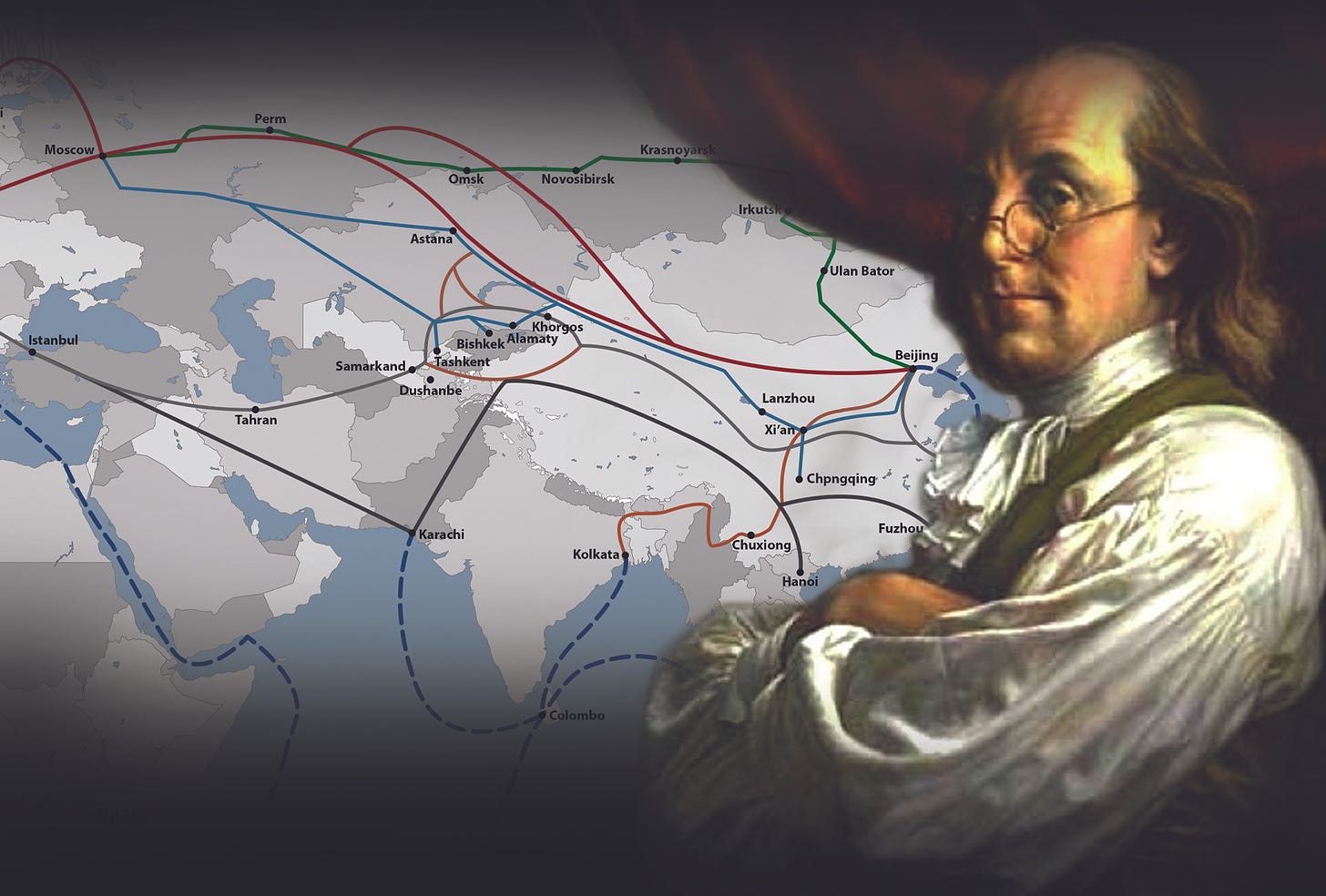
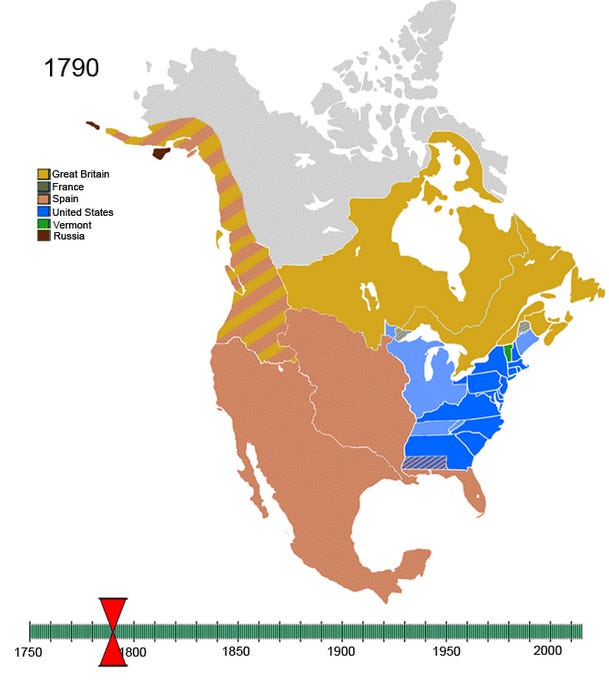
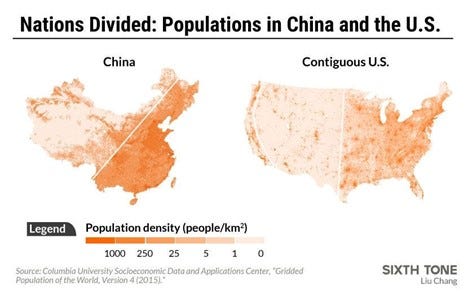
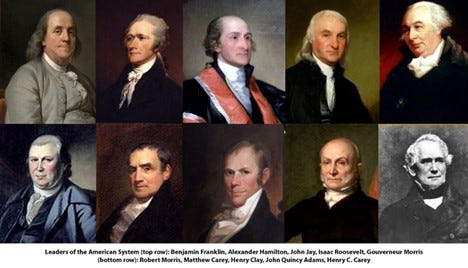

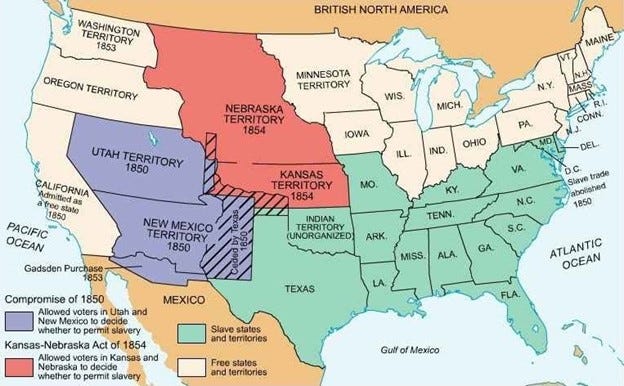
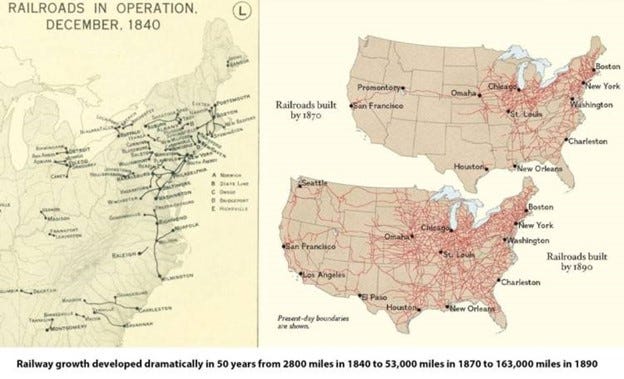
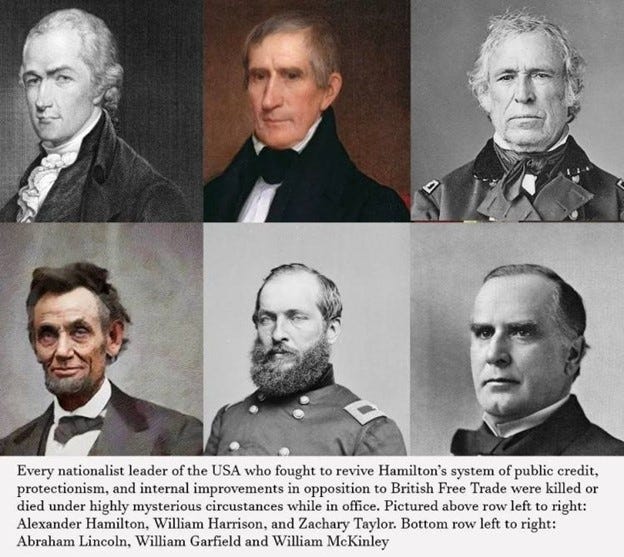
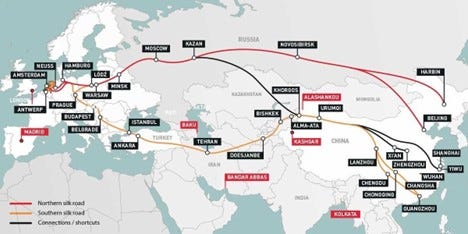
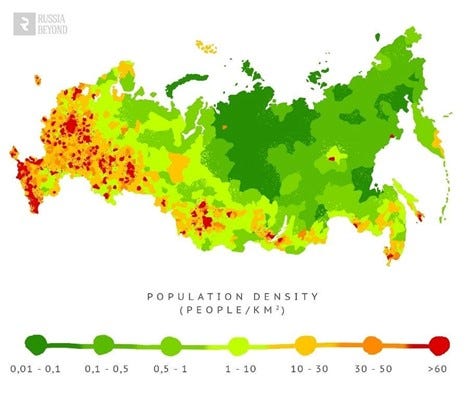
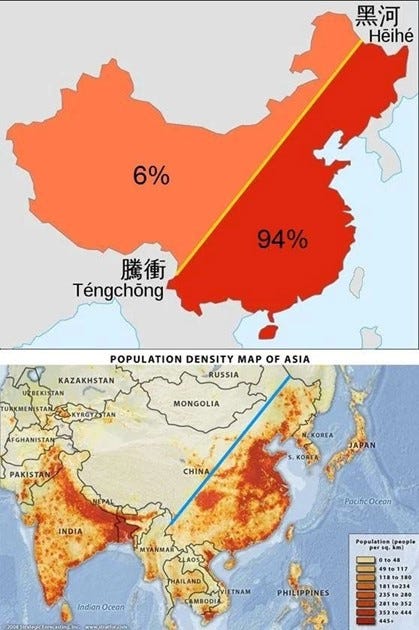
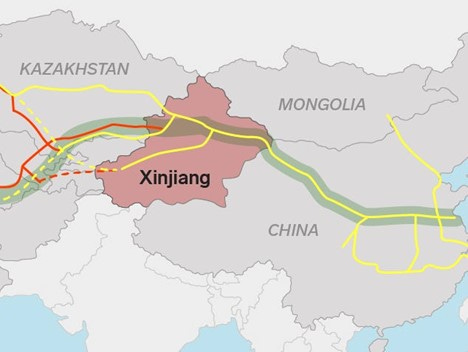
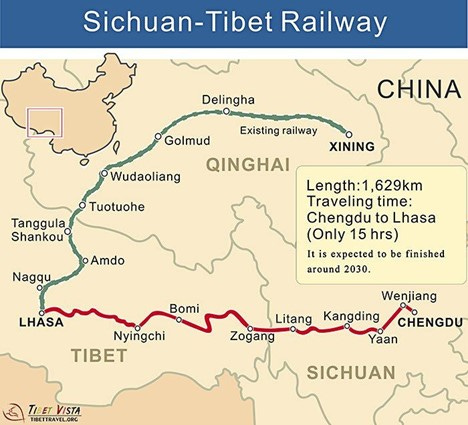
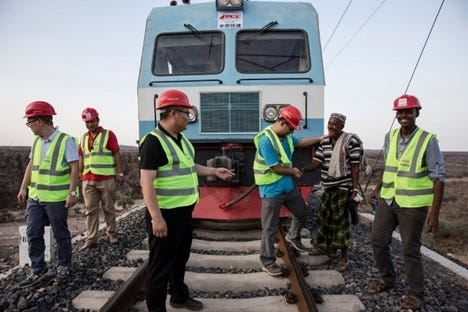
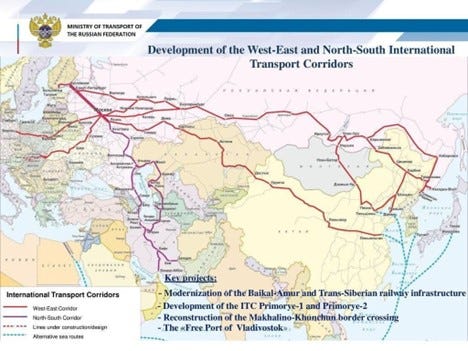
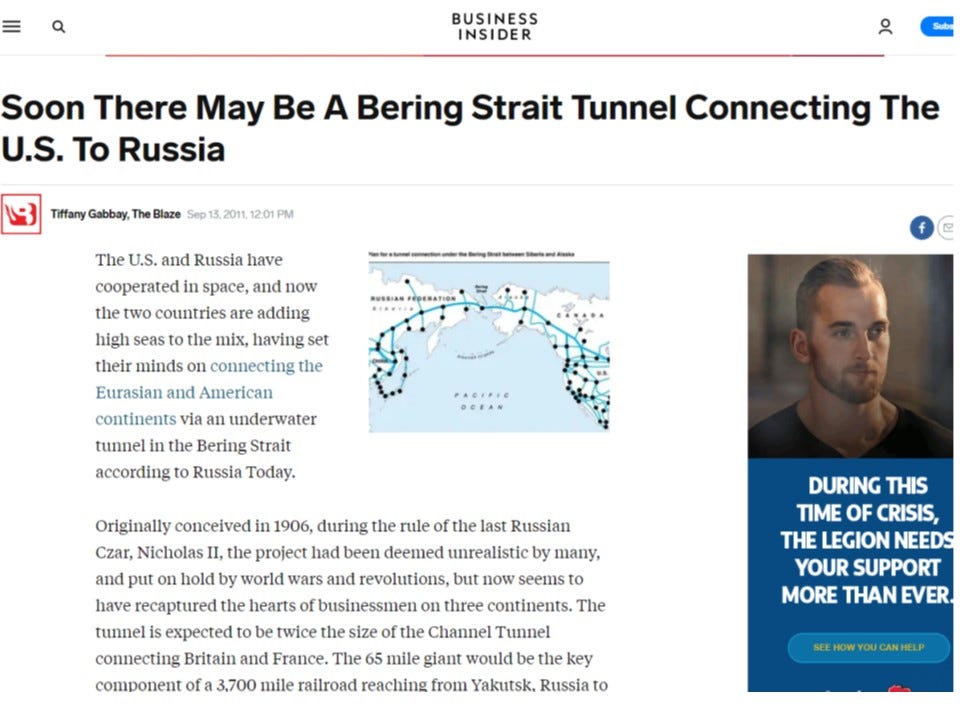
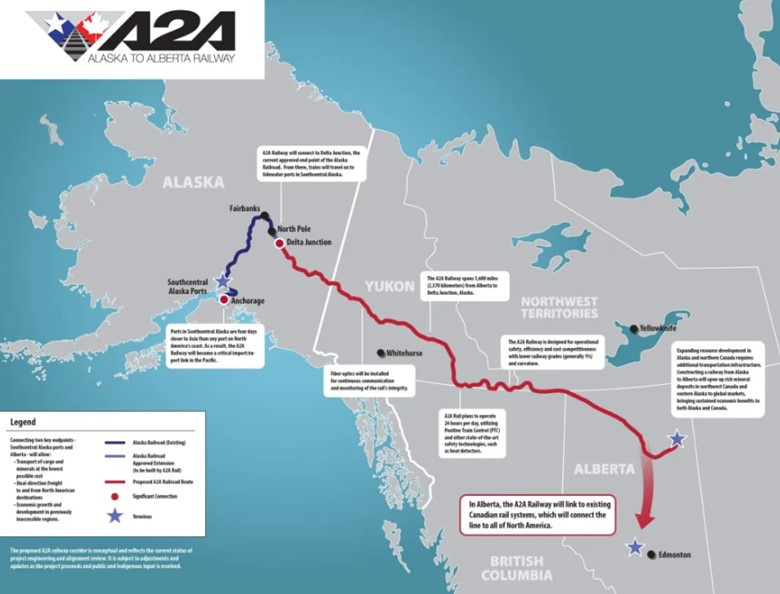


Great piece! Minor correction: it's the northern (not southern) Baikal-Amur (not Baikur-Amal) Mainline. The map shows but doesn't highlight it. It passes north of Lake Baikal, running northeast from Tayshet on the trans-Siberian line east of Krasnoyarsk (I was there in 1979).
A great article.